Ask Ethan: How Does The Fabric Of Spacetime Expand Faster Than The Speed Of Light?

Nothing in the Universe can travel faster than the speed of light. So how does space itself do it?
One of the fundamental rules we all learn in physics — set forth by Einstein more than 100 years ago — is that there’s an ultimate speed limit that everything in the Universe must obey: the speed of light. That fundamental speed, 299,792,458 m/s, is the speed at which all massless particles must travel through the vacuum of space. If you have mass, you can only approach (but never reach) that speed; if you travel through a medium instead of a vacuum, you can only travel slower than that ultimate cosmic limit. But if that’s true, then how come we can see objects in our Universe, which began with a Big Bang some 13.8 billion years ago, that are up to 46 billion light-years away? That’s at the heart of Robert Lipinski’s question, which asks:
Why does the fabric of space-and-time expand faster than the speed of light?
It’s one of the most difficult concepts in all of physics to understand, but we’re up to the challenge. Let’s find out.
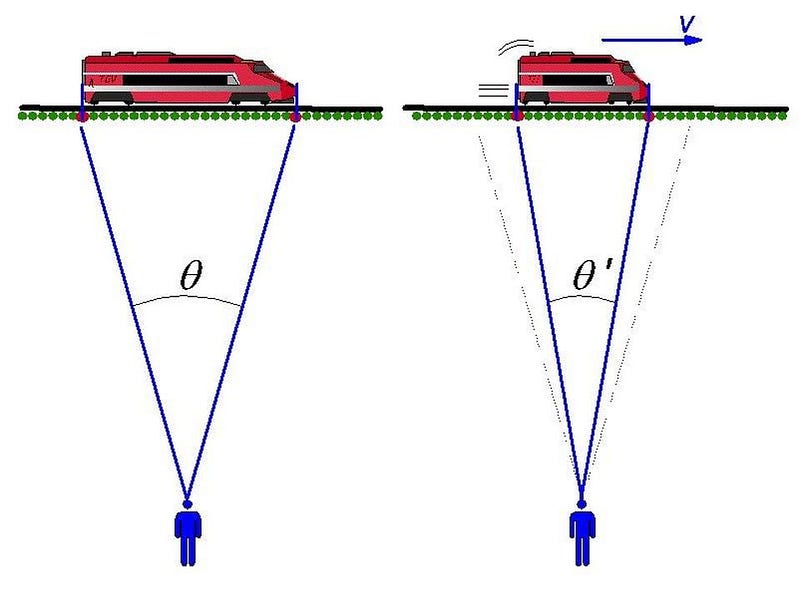
When Einstein put forth the notion of Special Relativity in 1905, it was as straightforward as it was revolutionary. It began by considering a phenomenon we’ve all interacted with: a light wave. For many decades, Einstein and his contemporary had known that light is an electromagnetic wave: an energy-carrying wave with oscillating, in-phase electric and magnetic fields. And, in a vacuum, it always moved at the same speed: the speed of light.
This last part was the most troubling to scientists. If you were on a train moving at 100 miles-per-hour (161 km/hr) and you threw a baseball at 100 miles-per-hour (161 km/hr) in the forward direction, that ball would move at 200 miles-per-hour (322 km/hr) from the perspective of someone on solid ground. But light didn’t work that way; it always moves at the same speed through the vacuum of empty space, from every perspective imaginable.
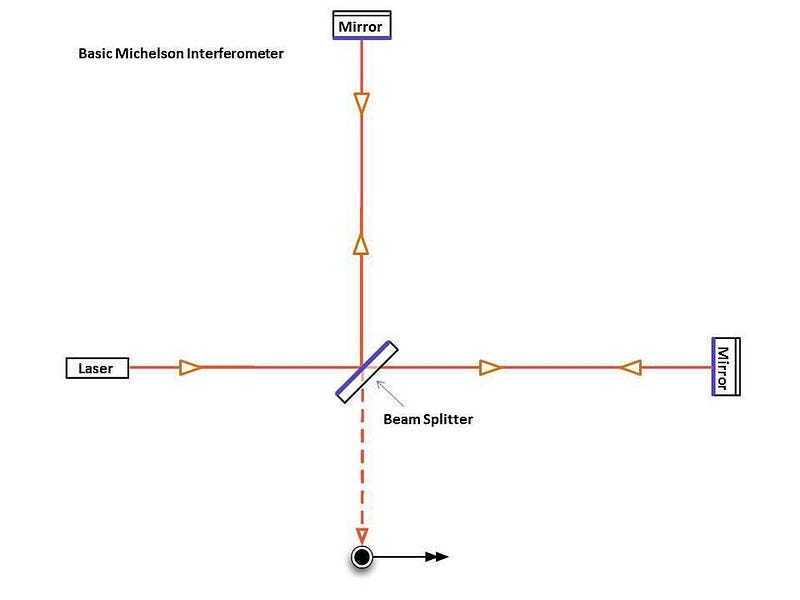
This was demonstrated to great precision in the 1880s by scientist Albert Michelson and his assistant, Edward Morley. In their experiment, they took a beam of coherent light (of the same wavelength) and passed it through a beam splitter: a device that splits the light into two perpendicular components. The light then travels down both paths of identical lengths until it strikes a mirror, reflects back, and gets recombined to create an interference pattern.
Now, here’s the key point: if one path is shorter than the other, or if the light moves faster (or slower) in one direction than the other, the interference pattern will shift. This happens to enormous precision in the LIGO and Virgo gravitational wave detectors, where passing gravitational waves change the path length of the two different directions. But, even with the motion of the Earth relative to the Sun at ~30 km/s, the interference pattern seen in the Michelson-Morley experiment never changed.
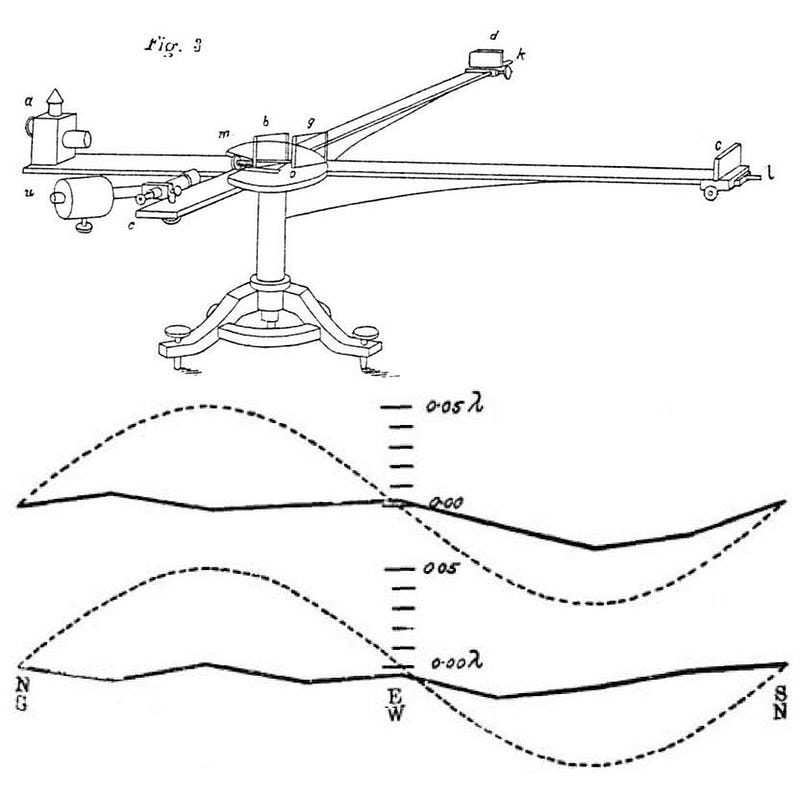
This taught us something incredibly important: the velocity of light is independent of any relative motion through space. No matter who you are, where you are, how quickly or in what direction you travel through the Universe, you will always observe all light waves traveling through space at that same universal speed limit: the speed of light in a vacuum. If you and the source move away from one another, the light’s wavelength gets redshifted; if you mutually move towards one another, the wavelength gets blueshifted. But the speed of light itself never changes through the vacuum of space.
This idea was revolutionary when Einstein proposed it, with many professional physicists (wrongfully) resisting it for decades. The opposition made it no less true, however. But the big prize still remained: to incorporate gravitation into the equation.
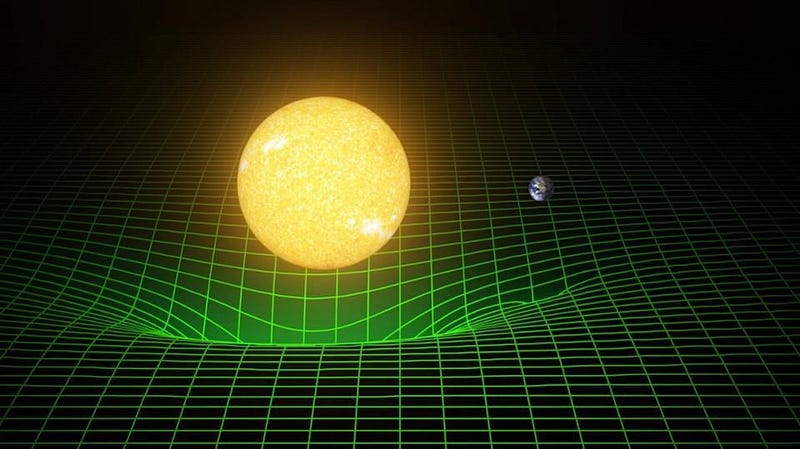
Before Einstein, gravitation was a Newtonian phenomenon. According to Newton, space and time were absolute, rather than relative, entities. The gravitational force of attraction between any two masses had to propagate infinitely fast, rather than limited by the speed of light.
The bigger revolution that Einstein brought to physics was the overthrow of this picture of gravitation. Sure, you could use Newtonian gravity as a very good approximation for almost all conditions, but in situations where matter or energy passed close to a large mass, Newton wouldn’t give you the correct answers.
Mercury’s orbit precessed more than Newton predicted. Light passing close to the Sun during an eclipse bent by a greater amount than Newton could explain.
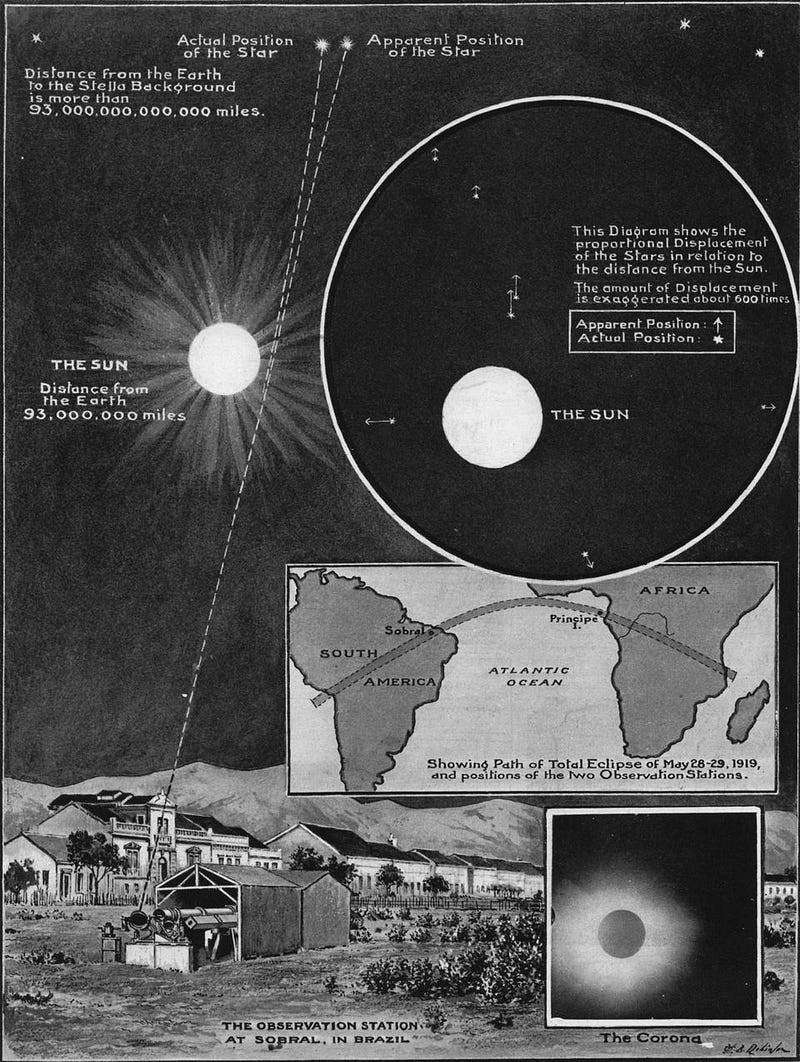
As the evidence clearly showed, Einstein’s General Relativity — where mass and energy curved space and that curved space determined the motion of mass and energy — had superseded Newtonian gravity. This new conceptualization of gravitation and of the fabric of space-and-time itself brought another revelation along with it: the fact that the fabric of the Universe, if it was full of roughly equal amounts of matter and energy everywhere, could not be static and unchanging.
Instead, as observations as early as the 1920s began to definitively show, there was a systematic relationship between an object’s distance from us and the amount that its light was observed to redshift. Sure, galaxies move through space relative to one another, but only at speeds up to a few thousand km/s. Yet when we view the actual redshifts of distant galaxies, they correspond to recession speeds much, much greater than those values.

The reason we’re seeing these cosmic redshifts scale with distance, as scientists quickly came to realize, is because the fabric of the Universe itself is expanding. Just like raisins in a leavening loaf of raisin bread dough, the every galaxy in the Universe all see the other galaxies moving away from them, with the more distant raisins (or galaxies) appearing to move away at faster rates.
But why is this?
It isn’t because the raisins are moving relative to the dough that they’re embedded in, nor is it because the individual galaxies are moving through the fabric of space. Rather, it’s owing to the fact that the dough itself — just like the fabric of space itself — is expanding, and the raisins (or galaxies) are just along for the ride.
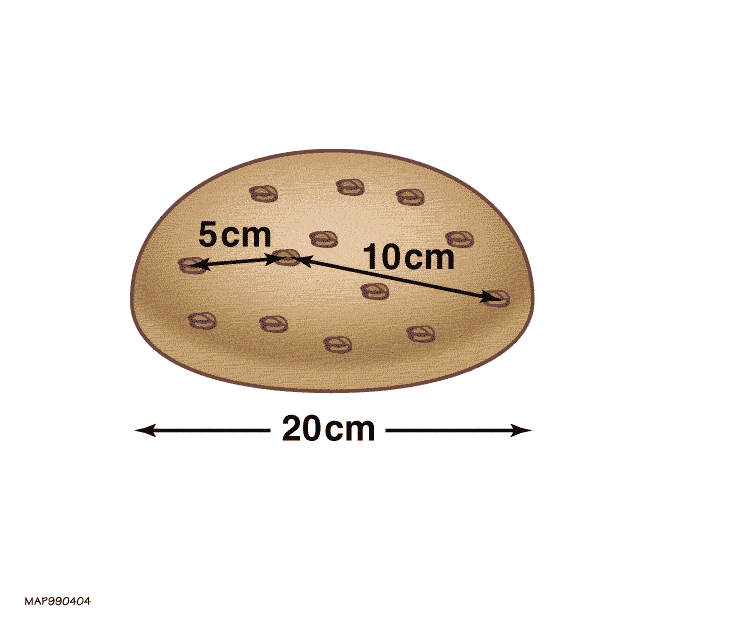
Meanwhile, because these objects are galaxies, they’re filled with light-emitting stars. They emit light continuously from the moment they first turn on, but we can only observe them from the moment that light first arrives at our eyes after journeying through the Universe.
Not the Newtonian Universe, mind you: the expanding, Einsteinian one.
This means that there are galaxies out there whose light is only just now arriving here on Earth for the first time, after journeying through the Universe for more than 13 billion years. The first stars and galaxies formed just a few hundred million years after the Big Bang, and we’ve discovered galaxies from as far back as when the Universe was just 3% of its present age. And yet, that light has been so severely redshifted by the expanding Universe that the light was ultraviolet when it was emitted, but is already far into the infrared by the time we can observe it.
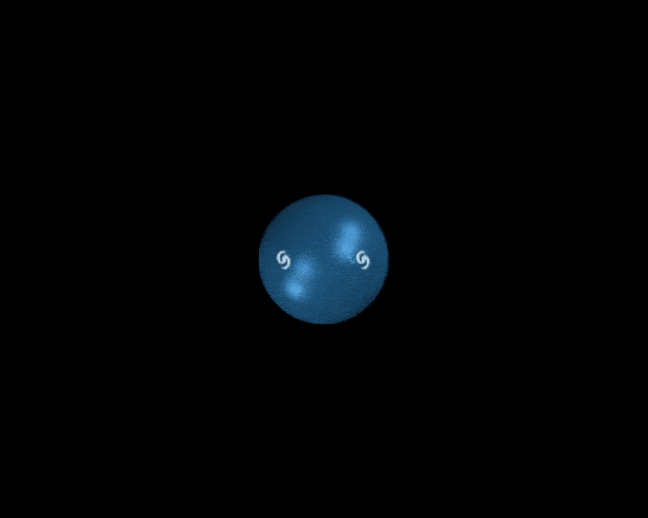
If we were to ask, from our perspective, what this means for the speed of this distant galaxy that we’re only now observing, we’d conclude that this galaxy is receding from us well in excess of the speed of light. But in reality, not only is that galaxy not moving through the Universe at a relativistically impossible speed, but it’s hardly moving at all! Instead of speeds exceeding 299,792 km/s (the speed of light in a vacuum), these galaxies are only moving through space at ~2% the speed of light or less.
But space itself is expanding, and that accounts for the overwhelming majority of the redshift we see. And space doesn’t expand at a speed; it expands at a speed-per-unit-distance: a very different kind of rate. When you see numbers like 67 km/s/Mpc or 73 km/s/Mpc (the two most common values that cosmologists measure), these are speeds (km/s) per unit distance (Mpc, or about 3.3 million light-years).
The restriction that “nothing can move faster than light” only applies to the motion of objects through space. The rate at which space itself expands — this speed-per-unit-distance — has no physical bounds on its upper limit.
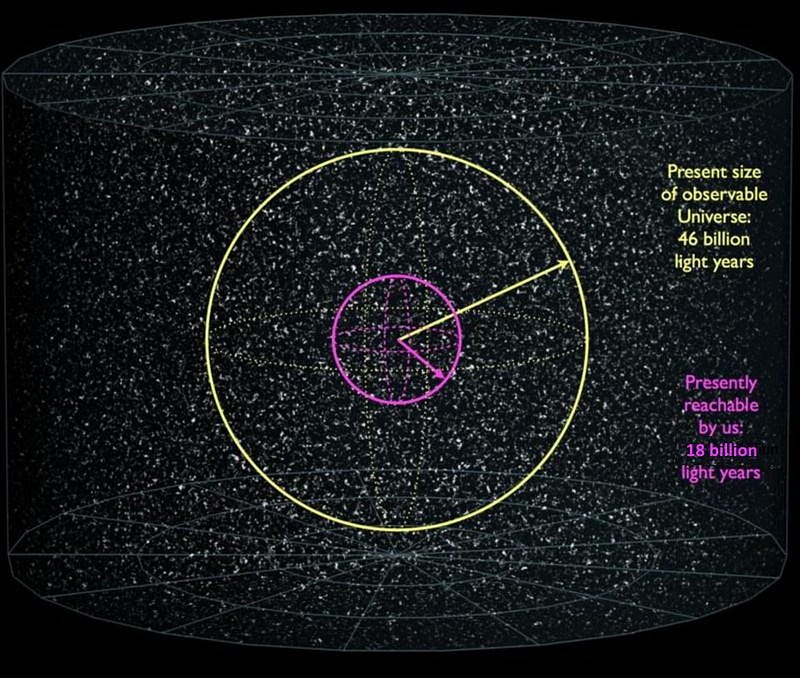
It might seem strange to consider all that this implies. Because we have dark energy, the expansion rate will never drop to zero; it will remain at a positive, finite value. It means that even though only 13.8 billion years have passed since the Big Bang, we can observe light from objects that are already 46.1 billion light-years away. And it means that beyond a fraction of that distance — about 18 billion light-years — no object launched today from Earth could ever reach it.
But no object is actually moving through the Universe faster than the speed of light. The Universe is expanding, but the expansion doesn’t have a speed; it has a speed-per-unit-distance, which is equivalent to a frequency, or an inverse time. One of the most surprising facts about the Universe is that if you do the conversions and take the inverse of the expansion rate, you can calculate the “time” that you get out.
The answer? Approximately 13.8 billion years: the age of the Universe. There isn’t a fundamental reason for that fact; it’s just a fascinating cosmic coincidence.
Send in your Ask Ethan questions to startswithabang at gmail dot com!
Ethan Siegel is the author of Beyond the Galaxy and Treknology. You can pre-order his third book, currently in development: the Encyclopaedia Cosmologica.




